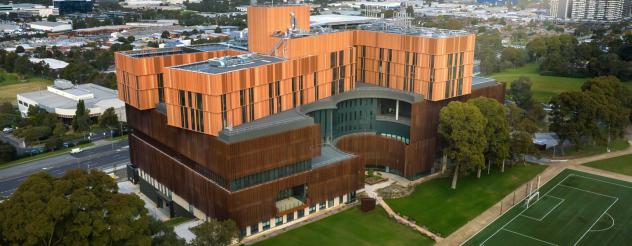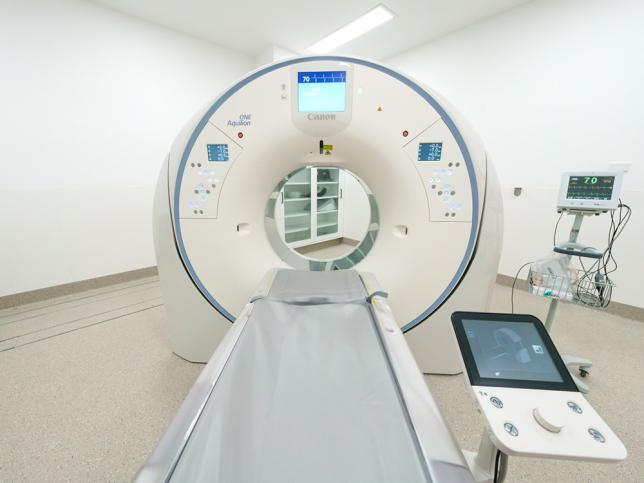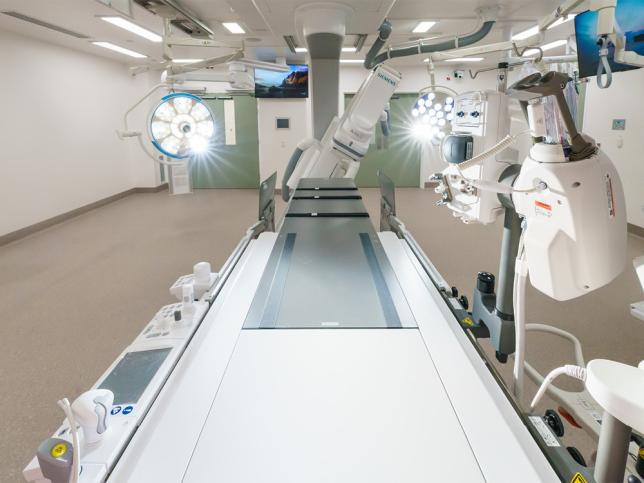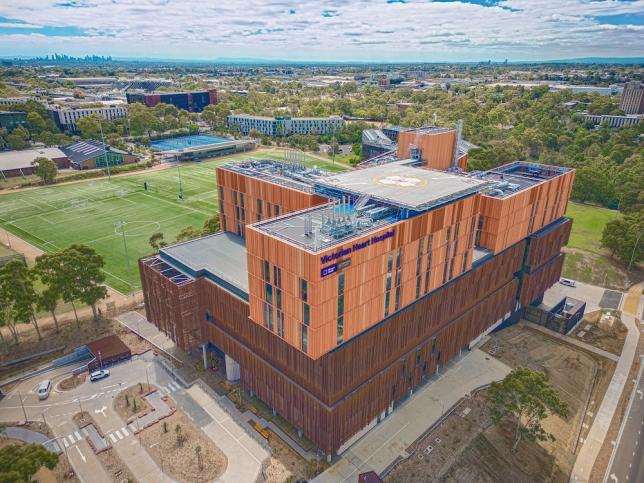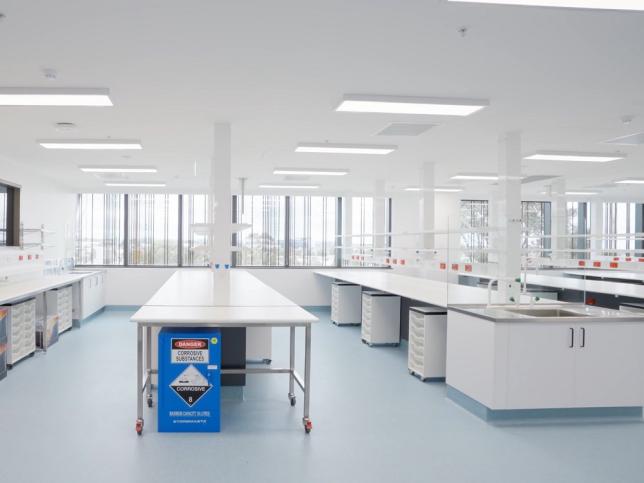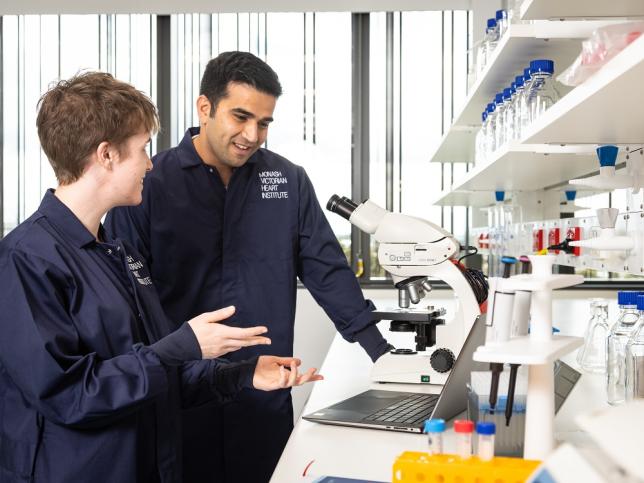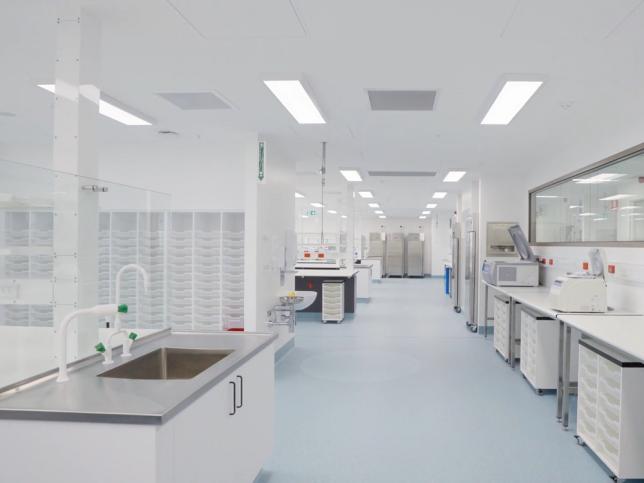IMAGES: View upward from the ground of a section of the hospital, followed by an aerial view of the hospital and surrounding suburb, and view upward of the upper level of the hospital.
VOICEOVER: We're really excited. This is the first standalone heart hospital in the country. The only one of its type in the southern hemisphere.
IMAGES: Professor Nicholls speaking in a conference room of the hospital.
VOICEOVER: This has been an extraordinary journey. My colleagues started to think about a dedicated heart facility probably about a decade ago.
IMAGES: A tracking shot across a section of the hospital façade.
ONSCREEN TEXT: How is research embedded in the hospital?
IMAGES: Professor Nicholls speaking in a conference room of the hospital, followed by view upward of the upper level of the hospital.
VOICEOVER: This project is completely about innovation. We're not just building a heart hospital. We're putting a heart hospital on a university campus.
IMAGES: Professor Nicholls and a colleague talking, silhouetted against a large viewing window, then walking along a corridor flanked by work benches, followed by a view of a research laboratory.
VOICEOVER: We're embedding our research. It brings our researchers close to our patients and our clinicians to be able to make new discoveries, new inventions. We can bring those inventions to the clinic much faster.
IMAGES: Professor Nicholls speaking in a conference room of the hospital.
VOICEOVER: It's important for our researchers. It's important for our patients because it means that our patients will have access to cutting-edge treatments.
IMAGES: An operating theatre, followed by a CT scanner.
VOICEOVER: There are some patients with heart disease where there are no treatments that can help them. We need new solutions.
IMAGES: Professor Nicholls speaking in a conference room of the hospital, followed by doors opening into an operating theatre.
VOICEOVER: If I was a patient in this hospital, there's an incredible opportunity to be involved in clinical trials, new ways of delivering the care that we already have.
ONSCREEN TEXT: A national training hub.
IMAGES: Lights within an operating theatre, followed by a tracking shot moving down a section of a research laboratory.
VOICEOVER: We have an opportunity to be the epicentre for teaching and training the next generation. and they're not just doctors. We're talking about nurses, physiotherapists, dietitians, genetic counsellors, you name it. This is going to be the national hub for where we're going to train people.
IMAGES: An operating theatre, followed by a lecture theatre and research laboratory.
VOICEOVER: Whether it's operating somebody in one of our operating theatres, or putting a new heart valve in one of our interventional cath labs. We can have people sitting our lecture theatres, our meeting rooms watching that, and then we can quickly decamp out into teaching areas and debrief and talk about what we just saw and why that's important.
IMAGES: Research laboratory.
VOICEOVER: We can simulate a whole bunch of new interventional procedures to use across the region, work closely with industry where we know that kind of simulation training is increasingly important.
ONSCREEN TEXT: How will you innovate future treatments?
IMAGES: aerial view tracks across the hospital, followed by close up of theatre lighting.
VOICEOVER: We see this whole building for us being a smaller part of Monash Health. It's not just about innovation from a research and teaching perspective. It really allows for us to innovate the way that we simply just look after our patients on a day-to-day basis.
IMAGES: Upward view of façade of section of the hospital.
VOICEOVER: It’s fundamentally about the patient. We want people home and well and live the lives they want to live.
IMAGES: Frame with ‘In partnership with Monash Health (logo) and Monash University (logo)’.
IMAGES: The closing slide is the Victorian Health Building Authority logo, the web address vhba.vic.gov.au and the Victorian State Government logo.
End of transcript.
